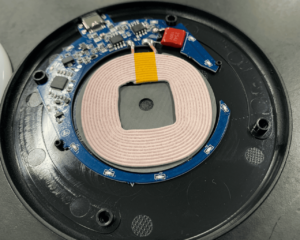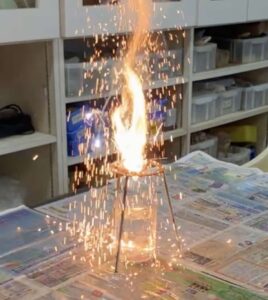Exploring the Reality of Life Through a Sanma Dissection—Even Anisakis Makes an Appearance!
Ken Kuwako, Science Trainer. Every day is an experiment.
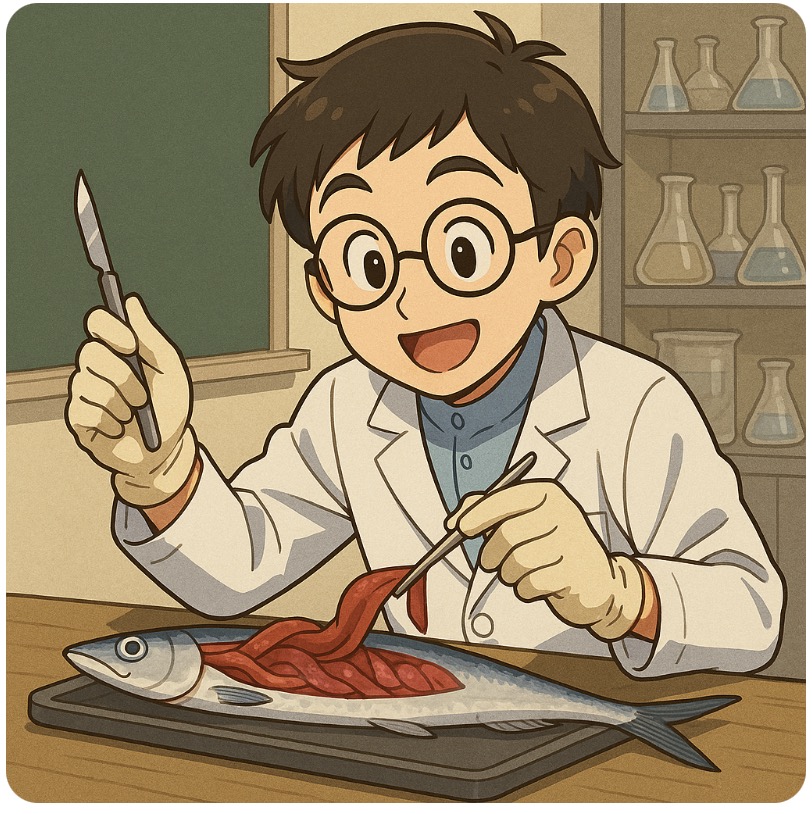
【This article is also available on YouTube Music!】
I’ll say it again: dissecting fish is just plain fun. But are you thinking it might be too challenging to do in a classroom setting?
This time, inspired by this hands-on lesson, I decided to tackle a Pacific saury dissection. I had originally planned to dissect a horse mackerel, but all I could find at my local supermarket were pre-prepared ones, so I had to give up on that idea. Since Pacific saury is in season and easy to get, I chose it instead.
The Pacific saury is long and slender, making its internal structure easy to observe, which is perfect for middle school students. Plus, it’s pretty affordable, which is a huge bonus. In this article, I’ll walk you through the dissection steps, highlight key observation points, share student reactions, and explore the educational value of this kind of hands-on science lesson.
■What You’ll Need
• A fresh Pacific saury (one per person is recommended)
• Dissection scissors
• Tweezers
• Dissection tray (a baking sheet can also work)
• Vinyl gloves
• Newspaper (to protect your work surface)
• A trash bag (for the guts and other bits)
■Dissection Steps and Observation Points
Start with External Observation
First, peek inside the gills to see the structure that connects to the mouth.
Open the mouth to get a sense of where the digestive tract begins.
Start the Incision from the Anus
Insert your dissection scissors into the anus and make a straight cut up toward the gills. Next, cut from the anus toward the back to open up the body.
Open the Body Like a Book
Gently peel the flesh away from the bones to open the body completely. Now the internal organs are clearly visible.
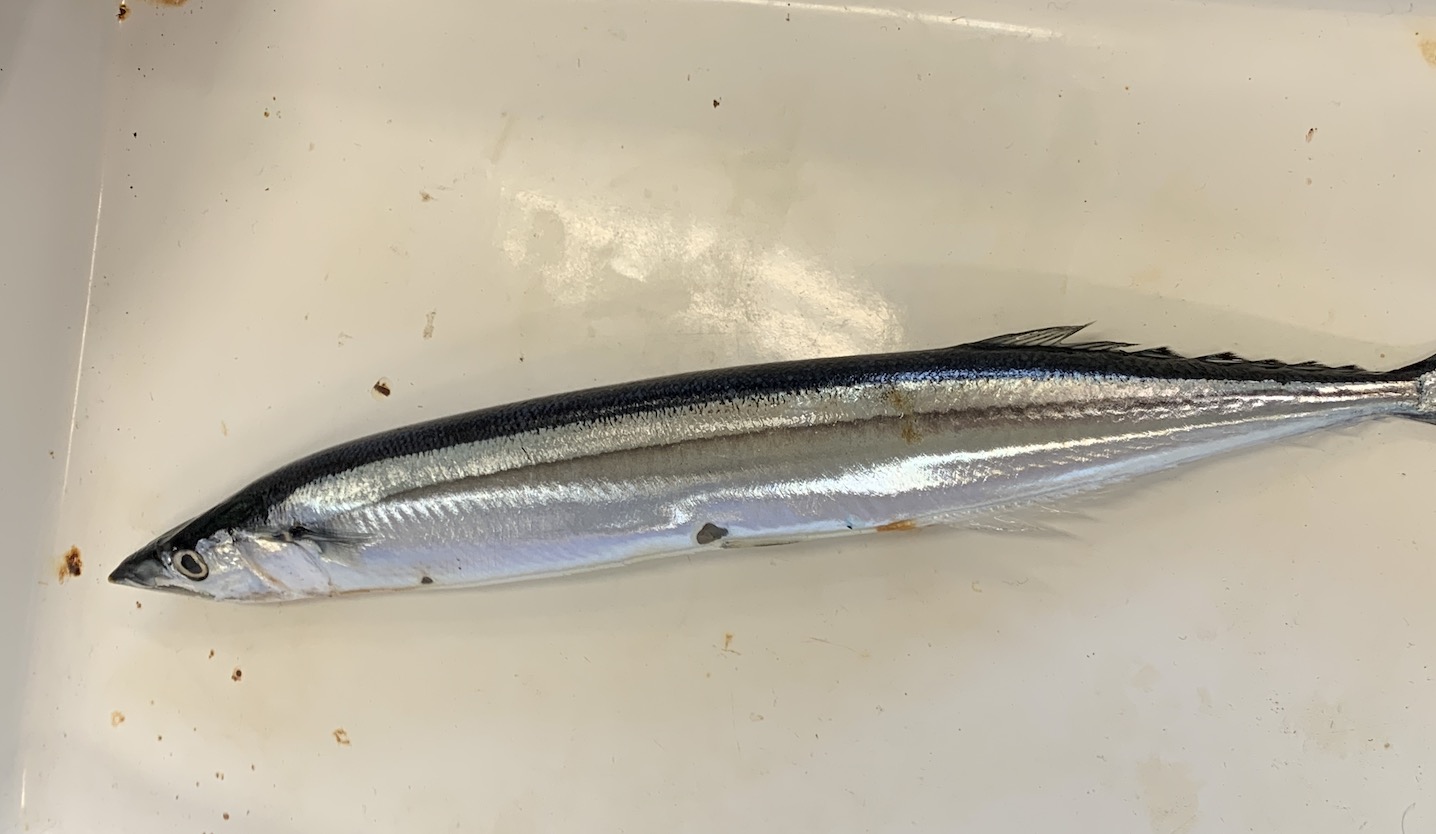
4. Observe the Gills and Find the Heart
Remove the upper part of the gill cover to get a good look at the internal structure. You’ll find the heart, which is a dark, triangular shape, at the bottom right of the gills.
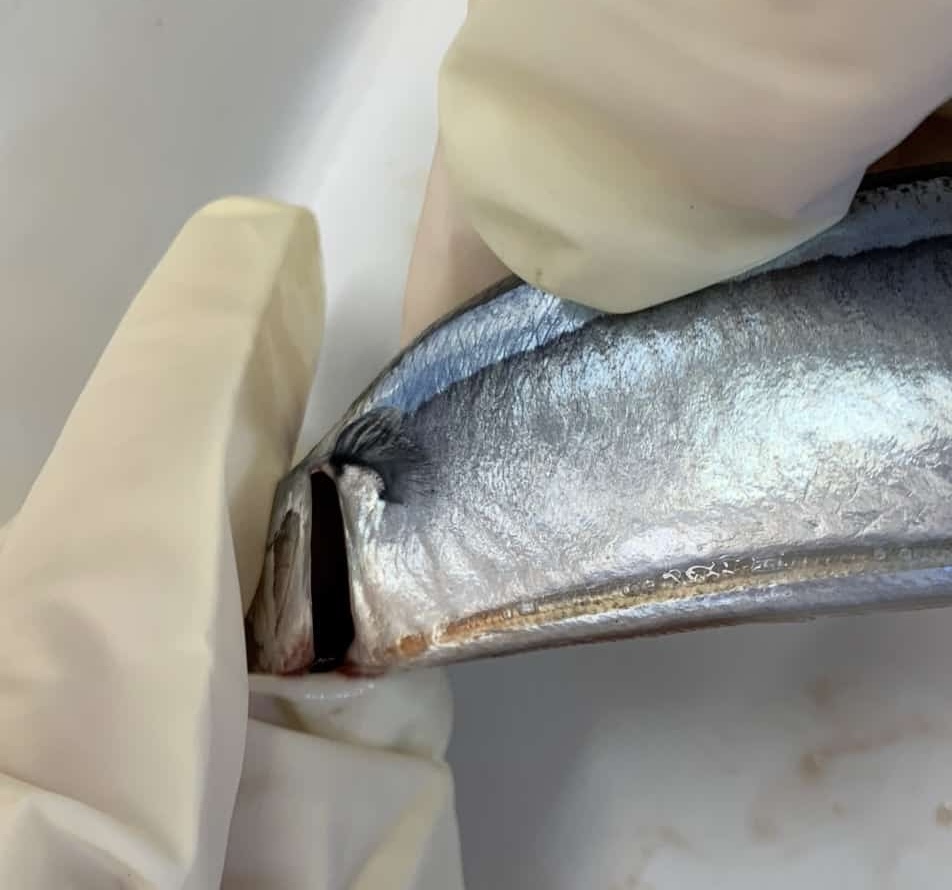
I opened the mouth to take a look.
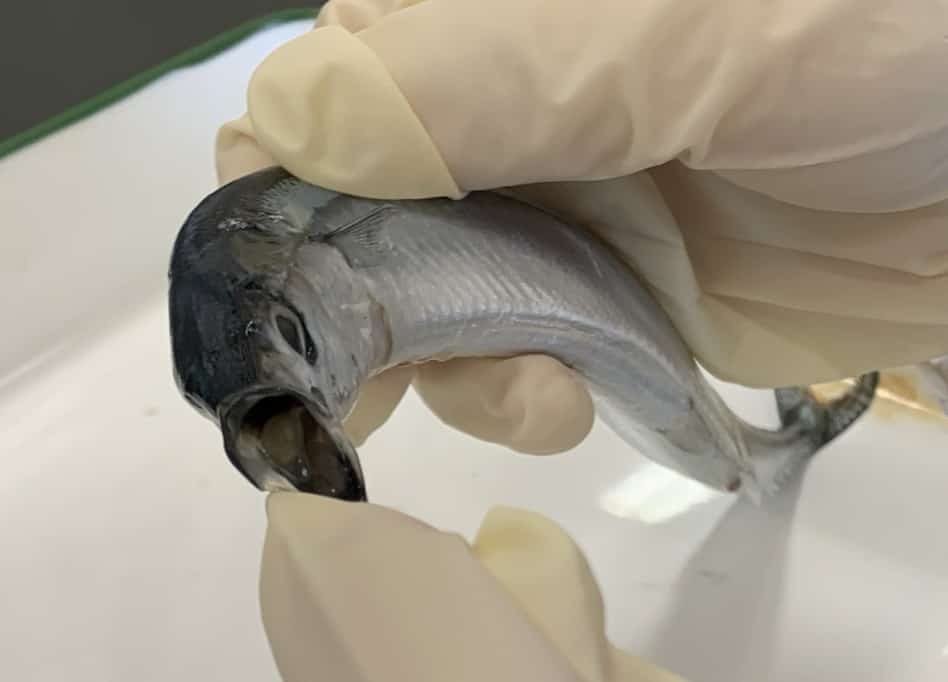
Remove the Internal Organs
Insert the scissors into the anus,

and cut all the way to the gills.

Next, from the anus, make another cut straight up, then turn at a right angle and continue cutting toward the gills.
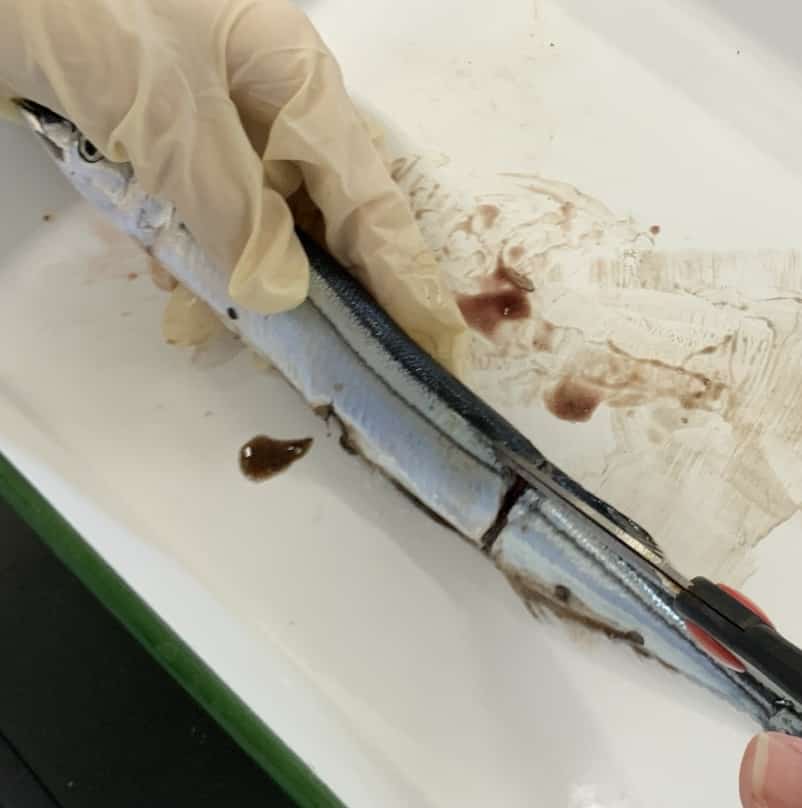
Snip, snip…
Once you’re done cutting, open the body like a book.
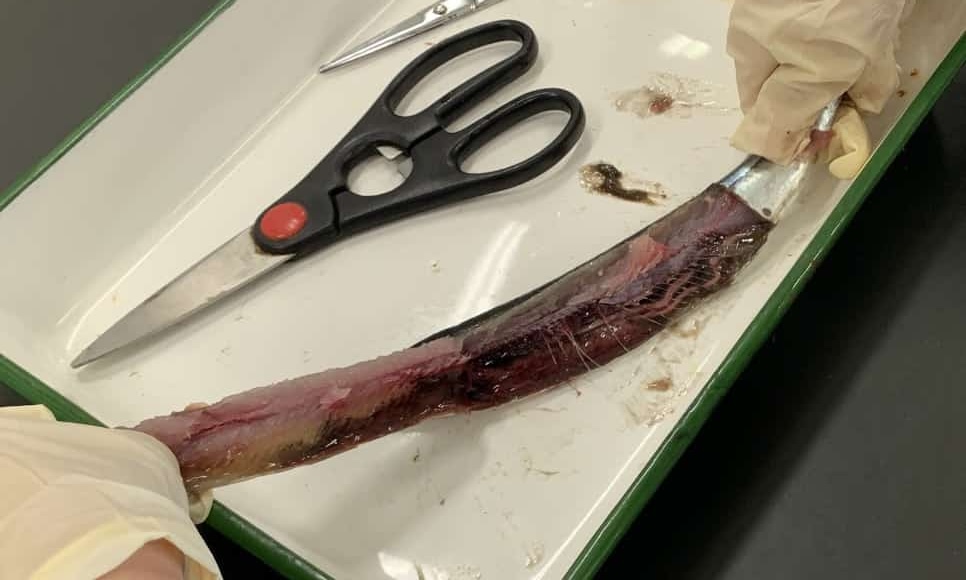
Remove just the upper part of the gill cover to expose the gill structure.
Detailed Gill Observation
The gill filaments look just like the bristles of a toothbrush. This gives you a great visual understanding of how fish efficiently take in oxygen from the water.

Dissecting the Heart
Take a close look at the heart after you’ve removed it. Its size, color, and shape give you a real-life sense of a heart’s basic biological structure. You can see a triangular-shaped organ to the right of the gills—that’s the heart.
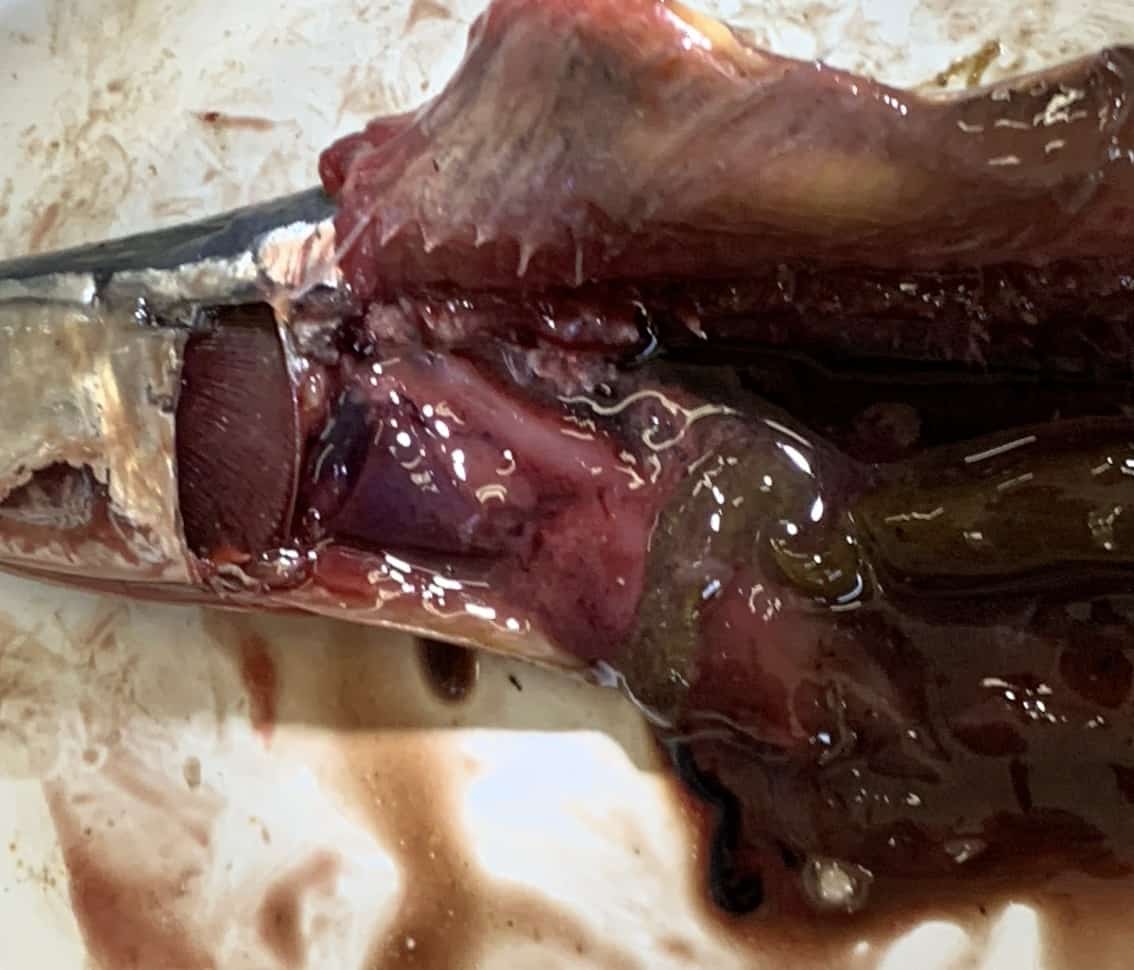
This dark-colored thing is the heart.

Next, make a cut at the base of the gills with your scissors to remove the internal organs all at once. For more details on how to do this, check out the PDF above.

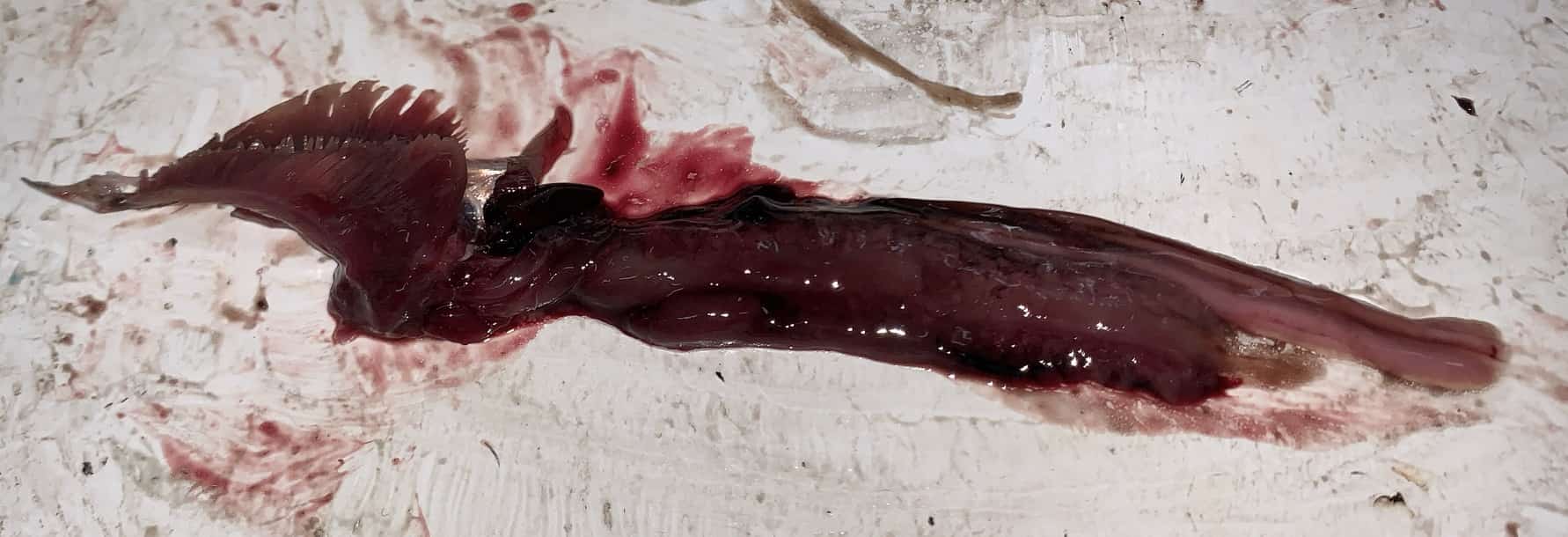
Cutting into the gills reveals their structure clearly. They look just like the bristles of a toothbrush.
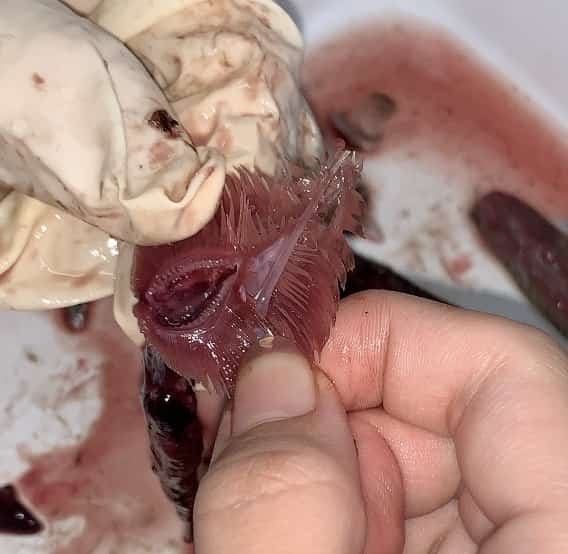
I also removed the heart.

■An Unexpected Discovery: Live Anisakis!
Incredibly, we found two Anisakis worms in this Pacific saury! And they were still alive! The students were amazed, shouting, “So that’s what causes food poisoning!”
In fact, I have a colleague who accidentally ate an Anisakis from a skipjack tuna and had to be rushed to the emergency room. This was a powerful moment where we weren’t just learning about the “mechanisms of life” but also about food safety.

■In Summary
There’s a huge impact in being able to observe the structure of a living creature in real life, not just in a textbook. And since Pacific saury is affordable and easy to handle, it’s a perfect addition to any lesson.
It might seem a little daunting at first, but with proper safety management and preparation, you’re guaranteed to create a memorable, hands-on learning experience for your students. I highly recommend you give it a try!
Contact and Requests
Want to make the wonders and fun of science more accessible? We’ve put together a collection of fun science experiments you can do at home, along with easy-to-understand tips. Feel free to browse around!
・About the author, Ken Kuwako, click here
・For various requests (writing, lectures, experiment workshops, TV supervision, appearances, etc.), click here
・Article updates are available on X!
![]() We post experiment videos on our Science Channel!
We post experiment videos on our Science Channel!

